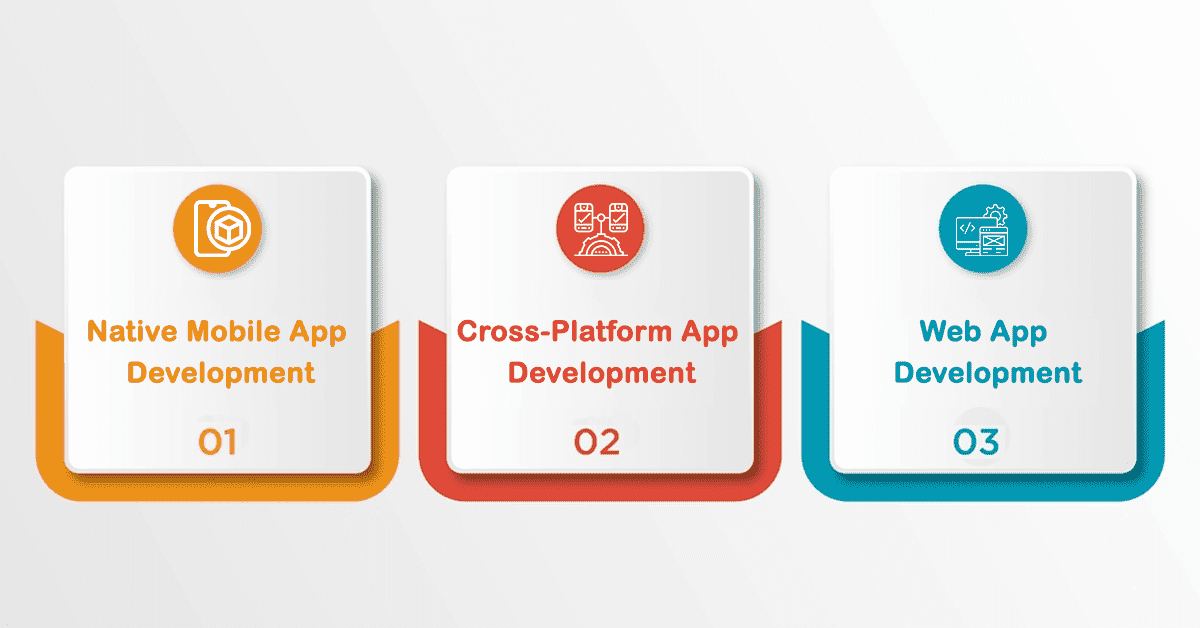-
solutinos
-
Hire
Frontend Developer
Backend Developer
-
NodeJS Developer
-
Java Developer
-
Django Developer
-
Spring Boot Developer
-
Python Developer
-
Golang Developer
-
Ruby on Rails Developer
-
Laravel Developer
-
.NET Developer
Technology
-
Flutter Developer
-
React Native Developer
-
Xamarin Developer
-
Kotlin Developer
-
Cross-Platform Developer
-
Swift Developer
-
MongoDB Developer
-
C Developer
-
Smart Contract Developers
Cloud
-
-
Services
Mobile Development
Web Development
- Work
-
Multi Services App
-
Food Delivery App
-
Grocery Delivery App
-
Taxi Cab Booking App
-
Multi Services App
-
OTT Platform APP
-
Social Media APP
-
Freelance Service App
-
Car Rental App
-
Medicine Delivery App
-
Liquor Delivery App
-
Sports Betting App
-
Online Coupon App
-
eLearning App
-
Logistics & Transportation App
-
Courier Delivery App
-
On-Demand Real Estate App
-
E-Wallet APP
-
Online Dating App
-
Handyman Services App
-
-
Process
-
Company

In today's digital arena, mobile apps are a vital tool that businesses need. Whether you aim to work on the next big app or streamline your company's operations, it's vital to grasp the financial aspect of mobile app development.
Understanding the costs of making a mobile app is key for everyone – individuals, businesses, and entrepreneurs. It helps you make informed decisions about your app journey.
You must understand the expenses of developing mobile applications to compete in this dynamic sector. This comprehensive blog will investigate the intricacy of Mobile App Development Costs in 2023. This blog will cover everything from the many forms of app development to the elements that determine how much money you spend on app development.
Navigating the App Development Landscape

Before diving into the cost breakdown, it's essential to understand the various approaches to app development. There are primarily three avenues you can explore:
Native Mobile App Development
Native apps are designed exclusively for one platform, like iOS or Android. They provide top-notch performance and access to features unique to that platform. This makes them an excellent choice for apps needing high performance or using many hardware resources.
Cross-Platform App Development
The mobile app development cost is determined by the number of features desired and their complexity. Adding features such as user logins, alerts, social network connections, and purchasing items in the app might require extra time and money to develop.
Web App Development
Web apps are accessed through web browsers and don't require installation. They are a budget-friendly option and work on various devices and platforms. However, they may not offer the same performance and functionality as native apps.
Influence of App Type on Development Costs
The kind of app you plan to build can significantly influence the total mobile app development cost. Let's examine how each type can impact your budget:
Simple Informational Apps
Apps that primarily deliver information or content are less expensive to develop. Examples include news apps, blogs, and reference apps. These apps typically have straightforward user interfaces and minimal backend complexity.
E-Commerce and Marketplace Apps
Apps designed for online shopping, product listings, and transactions usually have moderate development costs. Integrating payment gateways, product catalogs, and user accounts can add complexity, but the scale and features determine the price.
On-Demand Service Apps
Apps like food delivery, ride-sharing, or home services require robust backend infrastructure, real-time tracking, and complex algorithms. As a result, they tend to be among the costliest to develop.
Gaming Apps
Game mobile app development is a category of its own, with costs varying widely depending on the complexity, graphics, and interactive elements. Simple mobile games can be affordable, but high-quality 3D games require substantial investments.
Real-World Cost Examples
To provide a clearer picture of the Mobile App Development Cost in 2023, let's look at a few real-world examples:
Simple Informational App
- Type: Native iOS and Android
- Features: Content delivery, push notifications
- UI/UX: Basic design
- Time: 2-3 months
- Cost: $40,000 - $60,000
E-Commerce App
- Type: Cross-platform (React Native)
- Features: Product listings, user accounts, payment gateway integration
- UI/UX: Custom design, animations
- Time: 4 to 6 months
- Cost: $60,000 - $150,000
On-Demand Service App
- Type: Native iOS and Android
- Features: Real-time tracking, user profiles, payments, complex algorithms
- UI/UX: High-quality custom design
- Time: 6 to 9 months
- Cost: Starting from $300,000
Factors That Influence Mobile App Development Cost

Beyond the type of app, several factors come into play when estimating your app development budget:
Features and Functionality
The number and complexity of features directly impact the cost. Adding features like user authentication, push notifications, social media integration, and in-app purchases can make app development take longer and cost more.
UI and UX Design
Creating a user-friendly and visually attractive User Interface (UI) and ensuring a positive User Experience (UX) is crucial in mobile app development costs. Crafting a design that's easy to navigate and looks excellent is vital. Complex designs with animations and custom graphics may require more time and resources, thus increasing costs.
Platform Compatibility
Developing for multiple platforms (iOS, Android, etc.) adds to the cost, as it requires adapting the app to each platform's guidelines and design principles.
Backend Development
Apps with server-side functionality, databases, and APIs have higher development costs than more superficial front-end-only apps.
Third-Party Integrations
If your app requires integration with third-party services or APIs (e.g., payment gateways, mapping services), it can affect the cost, as it involves additional development and testing.
Security and Compliance
Ensuring the safety of user data and following industry rules such as GDPR might need extra work in development, which can lead to higher expenses.
Ensuring Quality Through Testing
Testing is vital for identifying and addressing issues for a seamless user experience. The more thorough the testing, the greater the associated cost.
Maintenance and Updates
Remember that mobile app development isn't a one-time expense. Ongoing maintenance, updates, and support contribute to the long-term cost of your app.
Assembling Your Development Team
Now that we've explored the various cost-influencing factors let's talk about one of the most significant decisions you'll make: hiring an in-house development team or outsourcing the work.
In-House Development Team
Having an in-house team offers more control and direct communication. However, it can be costlier due to salaries, benefits, and infrastructure.
Outsourcing
Outsourcing development to a specialized agency or freelance developers can be cost-effective. You can tap into a global talent pool and choose a team aligning with your project's requirements. This approach often provides flexibility and cost savings.
Hybrid Approach
Some companies opt for a hybrid approach, having a core in-house team for critical tasks and outsourcing other aspects of the project to reduce costs.
Setting a Realistic App Development Budget
Now that you've grasped the factors that impact mobile app development costs let's focus on creating a practical budget. Follow these steps for a straightforward approach:
Define Your Project Scope
Clearly outline your app's features, functionality, and design requirements. This will serve as the foundation for your budget estimation.
Research Development Costs
Research the average costs associated with the type of app you're building and your desired features. You can hire development team or use industry benchmarks.
Factor in Additional Expenses
Consider expenses beyond development, such as marketing, maintenance, and post-launch support. These costs are often overlooked but are essential for the app's success.
Set a Contingency Budget
Unforeseen challenges and changes can arise during development. Allocate a contingency budget to account for these unexpected expenses.
Get Multiple Quotes
If you outsource, obtain quotes from several development teams or agencies. Compare their expertise, portfolio, and pricing before making a decision.
Allocate Resources Wisely
Budget for the most important components of your project. Prioritize features that are most valuable to your users and your company objectives.
Plan for Scaling
Think about the future growth of your app. Ensure you have enough money to improve it as more people use it.
How Can You Minimizing Costs Without Sacrificing Quality

While it's essential to have a realistic app development budget, there are ways to minimize costs without compromising the quality of your app:
MVP Approach
Consider developing a Minimum Viable Product (MVP) first. This allows you to launch a basic app version with essential features, gather user feedback, and make informed decisions for future development phases.
Use Open-Source Solutions
Leverage open-source libraries and frameworks to reduce development time and costs. Many high-quality tools are available for free.
Agile Development
Adopt an agile development methodology, allowing flexibility, iterative development, and quicker time-to-market, potentially reducing costs.
Prioritize Features
Focus on core features in the initial release and gradually add more complex features in future updates as your app gains traction.
Optimize for Performance
Efficient code, serverless architecture, and optimized assets can reduce operational costs and improve app performance.
What to do Post-App Launch?

Once your app is live, it's essential to continue monitoring your expenses and optimizing your budget. Here are some post-launch considerations:
Marketing and User Acquisition
Allocate a budget for marketing and user acquisition strategies to promote your app and attract a broader user base.
Maintenance and Updates
Regularly update your app to fix bugs, improve performance, and introduce new features. Budget for ongoing maintenance to ensure your app remains competitive.
User Support
Offer customer support to address user inquiries, feedback, and issues. A positive user experience can lead to higher retention rates and increased revenue.
Analytics and Data Analysis
Invest in analytics tools to track user behavior and gather insights to inform your development and marketing strategies.
How Can Xbytes Solution Help You With Mobile App Development Cost Estimation?
How much does it cost for mobile app development? A question that everybody has in mind and is not simple to answer. Since numerous considerations come into play, but don't worry! Xbytes Solution is here to help.
At Xbytes Solution, we specialize in web app development. Because of the multiple factors, determining the cost might be difficult, but that is where we thrive.
Our team has a proven track record of developing outstanding applications for big businesses all around the globe. We understand what it takes to create a standout app.
We can help you with anything from a game-changing app to an estimate for your company app. We'll talk with you to understand your requirements and goals and then offer you a pricing estimate that fits within your budget.
As a result, keep the mobile app development cost from dissuading you. X-Byte Solution is immediately available to help you. Let us help you turn your app idea into a reality while staying within your budget. With our assistance, you can confidently begin your app development adventure and give a quality app to your target audience.
